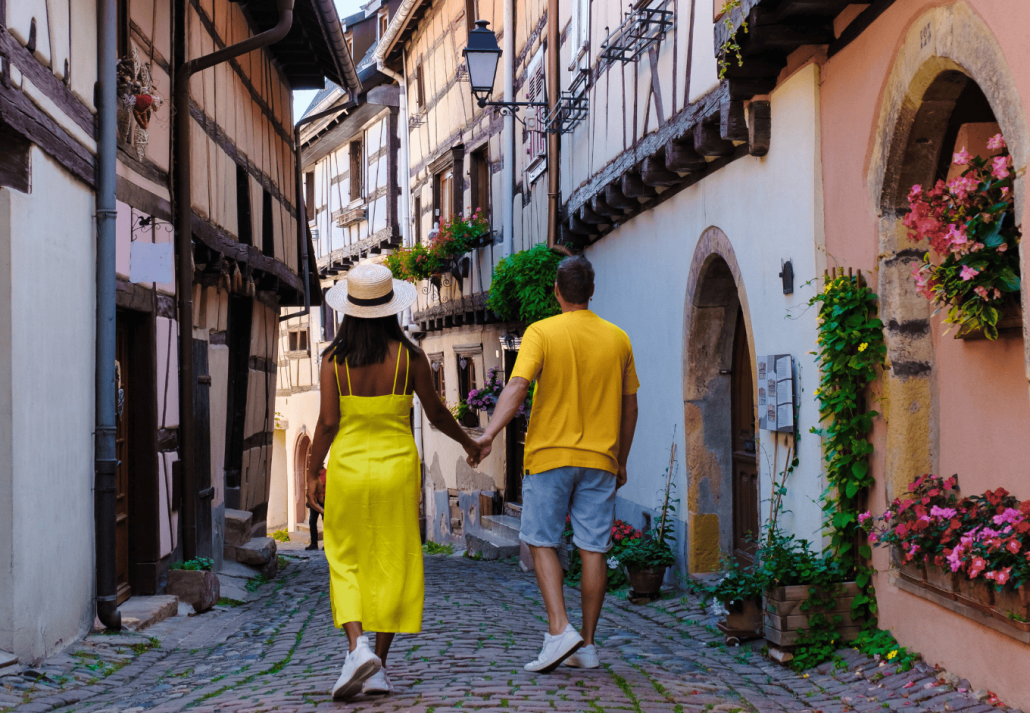Psst! Want to know a secret? While Paris gets all the glory, the most beautiful villages in France are where the real magic happens! Picture yourself wandering through cobbled streets where medieval lords once strolled, discovering hidden cafés tucked into half-timbered houses, and soaking in views that literally inspired famous paintings.
These quaint villages and small towns aren’t just pretty – they’re time machines wrapped in flower boxes and stone walls! Ready for the ultimate French countryside adventure? Let’s explore these 10 enchanting beaux villages de France that will steal your heart faster than you can say “croissant”! 🥐
| Village | Signature Charm | Ideal Season |
|---|---|---|
| Eguisheim | Flower-filled Alsatian circles | May-Jun (Wine Fest) |
| Rocamadour | Cliffside pilgrimage site | Sep-Oct (Fewer crowds) |
| Roussillon | Ochre cliffs & art trails | Apr-Jun (Lavender) |
| Locronan | Frozen-in-time granite square | Jul-Aug (Festivals) |
| Moustiers | Star suspended between cliffs | May-Sep (Pottery Fairs) |
| Riquewihr | Disney-like colorful streets | Dec (Christmas Markets) |
| Collonges-la-Rouge | Entire village of red sandstone | Oct (Fall colors) |
| Lagrasse | Medieval abbey & bookshops | Year-round |
| Saint-Cirq-Lapopie | Artists’ cliffside paradise | Jun (Longer days) |
| Veules-les-Roses | Seaside charm & oyster feasts | Jul-Sep (Beach weather) |
Pro Tip: Book accommodations 3-6 months in advance for peak seasons!
10 Most Charming Villages in France
1. Eguisheim, Alsace: The Fairytale Come to Life
Once upon a time in eastern France…
If Disney designed a French village, it would be Eguisheim. This circular wonderland in Alsace features:
- Concentric rings of winding streets lined with rainbow-coloured half-timbered Alsatian houses (hello, perfect Instagram backdrop!)
- Flower displays so extravagant they’ve earned national awards (the locals compete for the most spectacular window boxes!)
- A 13th-century castle birthplace of Pope Leo IX (yes, an actual pope was born here!)
- Wine cellars offering tastings of crisp Rieslings and aromatic Gewürztraminers that will make your taste buds dance the can-can
Getting There: Fly into EuroAirport Basel-Mulhouse-Freiburg or Strasbourg, then drive 30-60 minutes. By public transport, take a train to Colmar, then catch bus #440.
Secret Tip: Visit during the “Eguisheimer Weg” wine route festival in May when local winemakers transform their cellars into pop-up bars!
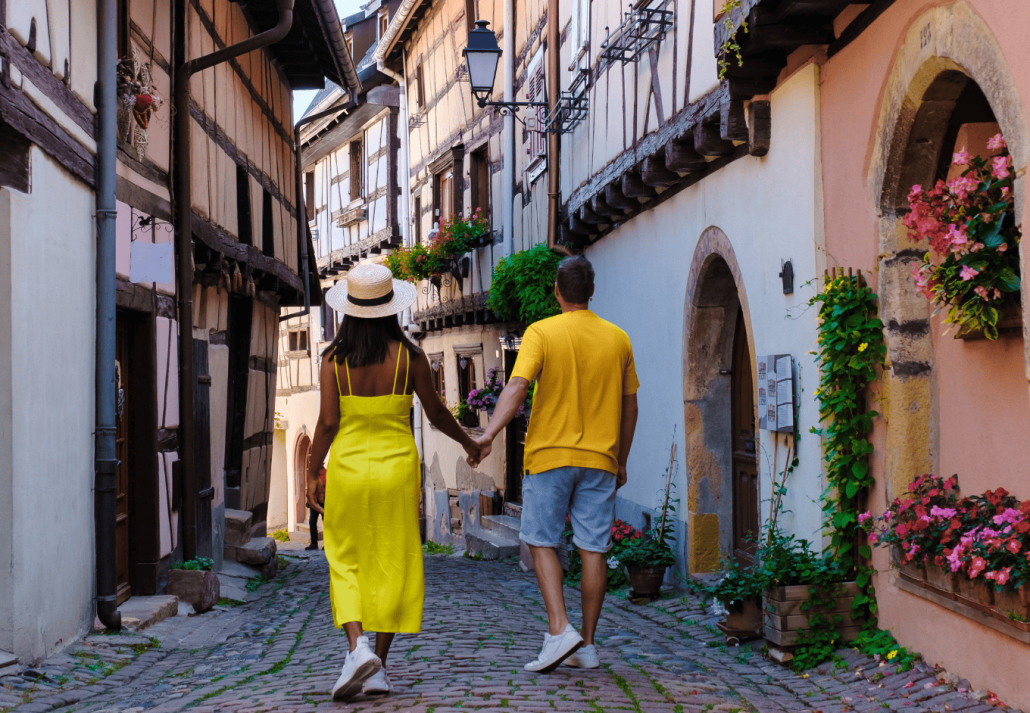
2. Rocamadour, Occitanie: The Village That Defies Gravity 🧗️
Clinging to a cliff like it’s holding on for dear life…
Rocamadour isn’t just a village; it’s an architectural miracle perched 120 meters up a rocky outcrop that will leave you wondering, “How did they build this without modern machinery?!” This medieval city features:
- Buildings that seem to grow directly out of the limestone cliff face
- The Grand Escalier (216 steps) that pilgrims once climbed on their knees (your quads will thank you for using your feet!)
- Seven ancient churches stacked on top of each other like a medieval layer cake
- The famous Black Madonna statue that’s been attracting pilgrims since the Middle Ages
Getting There: The closest airports are Brive-Valley of the Dordogne or Toulouse-Blagnac. By car, it’s about 2.5 hours from Toulouse or 30 minutes from Sarlat. Train to Rocamadour-Padirac station + taxi for the final 4km.
Local Secret: The best views aren’t in the village but from L’Hospitalet viewpoint across the valley. Sunset there is pure magic!
3. Roussillon, Provence: The Village That Blushes
Mother Nature went wild with her paint palette here…
Standing out among French villages like a flamingo in a flock of pigeons, Roussillon glows with extraordinary ochre buildings in shades from subtle salmon to fiery orange. This picturesque village offers:
- An entire village built from local ochre clay that changes colour throughout the day with the shifting sunlight
- The Sentier des Ocres trail where you can walk through natural ochre formations that feel like a Martian landscape
- Art galleries showcasing works inspired by the same colors that enchanted Cézanne and Chagall
- A bell tower that offers panoramic views of the surrounding French countryside and lavender fields
Getting There: Fly to Marseille or Avignon, then drive about 1 hour. By public transport, take a train to Avignon then bus #5.
Must-Do: Visit the Conservatoire des Ocres to learn how this natural pigment influenced art history and try your hand at ochre painting! ️
4. Locronan, Brittany: Where Time Literally Stopped ⏰
The village that said “non, merci” to modern eyesores…
Step into Locronan and you’ll wonder if your time machine worked too well! This impeccably preserved medieval town in Brittany has:
- Banned visible power lines, satellite dishes, and modern signage to maintain its 16th-century appearance
- A magnificent central square surrounded by granite merchant houses where Renaissance-era TV shows and films are frequently shot
- Ancient linen manufacturing workshops that once created sails for royal naval ships
- A mysterious pagan processing path that pre-dates Christianity and still hosts solstice celebrations
Getting There: Fly to Brest Airport (40km away) or take a train to Quimper (15km away), then bus or taxi. Having a car is ideal for exploring the region.
Fun Fact: The village’s name comes from Saint Ronan, a hermit who allegedly lived here in the 10th century and could run faster than a deer! 🦌
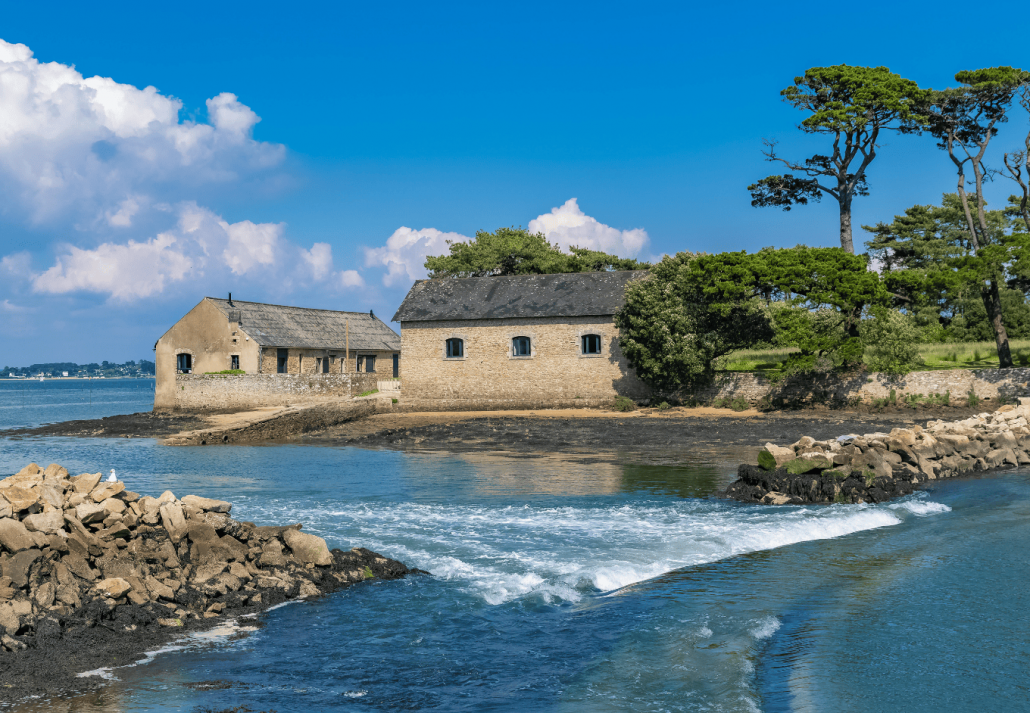
5. Moustiers-Sainte-Marie, Provence: The Village with a Star ⭐
Look up to see the village’s curious cosmic connection…
Nestled between two rocky cliffs in the Alpes-de-Haute-Provence region, Moustiers-Sainte-Marie has a literal star hanging above it! This enchanting village features:
- A 16th-century star suspended on a 227m chain between mountain peaks (locals say it was placed by a returning crusader knight)
- Waterfalls cascading through the village center, powering ancient mills
- World-famous faience pottery workshops where artisans create delicate hand-painted ceramics using 17th-century techniques
- The Notre-Dame church dramatically built into the mountainside with panoramic views of Sainte-Croix Lake
Getting There: Fly to Nice or Marseille, then drive about 2 hours. Public transport is limited, so a car is recommended.
Local Experience: Time your visit for the Faience Festival in July when potters demonstrate traditional techniques and the streets become an open-air gallery!
6. Riquewihr, Alsace: The Village That Inspired “Beauty and the Beast”
Belle’s “little town” might just be this Alsatian gem…
Stepping into Riquewihr feels like walking into a storybook illustration with its technicolor half-timbered buildings and flower-bedecked balconies. This beautiful town offers:
- Stunningly preserved 16th-century architecture that escaped WWII bombing (locals claim Disney used it as inspiration for “Beauty and the Beast”)
- The Dolder, a 13th-century defensive tower with a quirky museum of medieval torture instruments (not for the faint-hearted!)
- The “Thieves’ Tower” where you can see original prison cells and graffiti carved by prisoners 500 years ago
- World-class Riesling vineyards producing wines that have been celebrated since the Middle Ages
Getting There: Fly to Strasbourg or Basel, then drive 1 hour or take a train to Colmar followed by bus #106.
Hidden Gem: Visit the tiny Musée du Dolder to see the mechanical puppets that once announced the hours from the clock tower! ⏰
7. Collonges-la-Rouge, Nouvelle-Aquitaine: The Ruby of Villages ️
A village so red it looks like it’s blushing…
The first officially designated “Most Beautiful Village in France” (and birthplace of the Les Plus Beaux Villages de France association), Collonges-la-Rouge is built entirely from crimson sandstone that glows like fire at sunset. This remarkable tiny village showcases:
- Buildings constructed from deep red sandstone that contrast dramatically with the green countryside
- Turreted merchant houses that look like mini-castles (the village had 25 noble families in the 16th century!)
- An extraordinary mixture of Gothic architecture and Renaissance styles with gargoyles and carved door lintels
- The unusual Church of St. Peter with its multi-colored interior (a rarity in church design)
Getting There: Fly to Limoges or Brive, then drive about 30 minutes from Brive or 1 hour from Limoges. Train service runs to Brive-la-Gaillarde, then taxi.
Photography Tip: Visit after a rain shower when the red stone becomes even more vibrant!
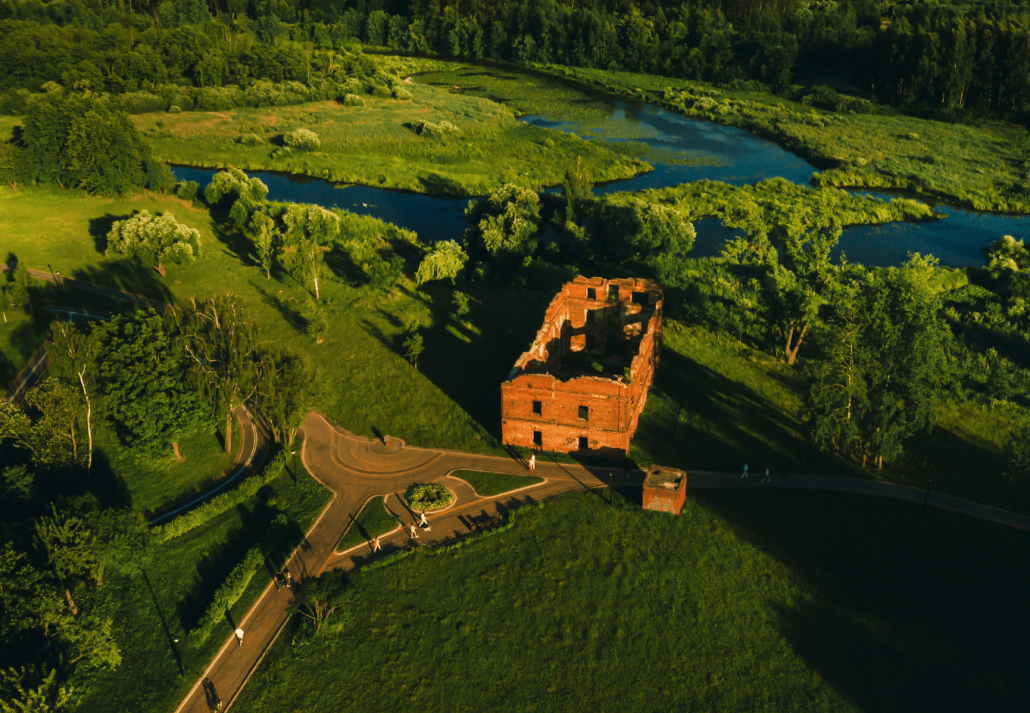
8. Lagrasse, Occitanie: Where Abbey Meets Artistry
Where medieval monks meet modern Bohemians…
Nestled in the Corbières wine region along the River Cesse, Lagrasse balances ancient history with a thriving creative community. This cultural heritage site features:
- A magnificent 8th-century Benedictine abbey divided into private and public sections (the monks still live in one part!)
- A perfectly preserved medieval bridge with distinctive arches spanning the river
- A surprising number of bookshops and art studios (the village hosts renowned literary festivals)
- Ancient covered market where the market day tradition has continued unbroken for over 800 years
Getting There: Fly to Carcassonne (40km) or Perpignan (65km), then drive. Train to Narbonne + bus #8 gets you there by public transport.
Insider Tip: The abbey’s current monks still produce natural cosmetics and honey products available only from their tiny shop. Perfect souvenirs!
9. Saint-Cirq-Lapopie, Occitanie: The Artists’ Paradise ️
So beautiful that Surrealist André Breton declared, “I stopped wanting to be elsewhere”…
Dramatically positioned 100 meters above the Lot River, Saint-Cirq-Lapopie has been enchanting artists for centuries. This spectacular village offers:
- A skyline of pointed gothic rooftops cascading down the cliff face
- Thirteen historic monuments within one tiny village (that’s more heritage sites than many cities!)
- Former homes and studios of Surrealist artists who fell under the village’s spell
- Narrow streets too steep for cars, preserving the pedestrian character of medieval times
Getting There: Fly to Toulouse or Brive, then drive approximately 1.5 hours. Train service runs to Cahors, followed by seasonal tourist buses (summer only) or taxi.
Adventure Option: Canoe the Lot River for a dramatic approach to the village from the water – the view from below is unforgettable!
10. Veules-les-Roses, Normandy: Where River Meets Sea
Home to France’s shortest river with the longest charm…
This coastal gem in Normandy is built around the River Veules – France’s shortest river at just 1.1km from source to sea! This delightful village features:
- Historic water mills that once powered the village’s textile industry
- A perfect blend of thatched Norman houses and elegant beach villas from the Belle Époque era
- France’s only waterfront slot canyon you can walk through
- Restaurants serving seafood caught that morning just meters from your table
Getting There: Fly to Paris and drive 2.5 hours, or take a train to Dieppe followed by a local bus connection (limited service).
Culinary Must: Try the local specialty “Veulaise” oysters cultivated in the village’s ancient sea water beds – they have a unique nutty flavour you won’t find elsewhere! 🦪
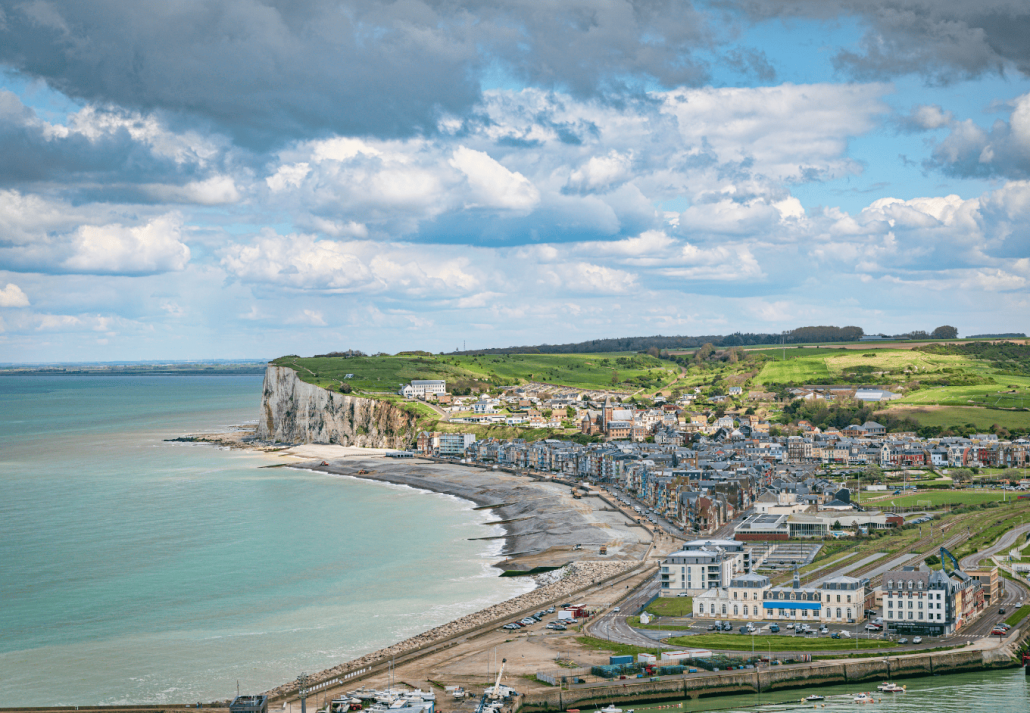
Planning Your Epic French Village Adventure ️
Ready to trade tourist traps for authentic rural France? Here’s how to make the most of your visit:
When to Go
- Spring (April-June): Wildflowers carpeting the countryside, pleasant temperatures, and fewer tourists
- Fall (September-October): Harvest festivals, wine celebrations, and gorgeous autumn colors
- Avoid August: That’s when French people take their holidays, so villages can be crowded
How to Get Around
- Rental Car: The ultimate freedom to explore off-the-beaten-path villages and stop for impromptu picnics
- Regional Trains + Bikes: Many villages are accessible by combining train travel with cycling the final stretch
- Guided Small-Group Tours: If you prefer to let someone else handle the logistics while learning the stories behind each village
Where to Stay
Immerse yourself in French charm with these unforgettable stays near the most beautiful villages:
Ready to Book Your French Fairytale?
These villages deserve more than a day trip— stay overnight and live the magic! Find the best deals on charming B&Bs, gîtes, and even castles on CuddlyNest and save up to 30%. Book now before these hidden gems get crowded!
Must-Pack Items
- Comfortable walking shoes (those cobbled streets are charming but uneven!)
- French phrasebook (village locals appreciate even simple effort at their language)
- Reusable water bottle (many villages have ancient fountains with drinkable spring water)
- Expandable bag for all the cheeses, wines, and crafts you’ll want to bring home!
Whether you’re drawn to the colourful half-timbered buildings of the east, the sun-drenched stone villages of the south, or the granite charm of Brittany, these beaux villages offer an authentic taste of France beyond the usual tourist circuit. In these magical places, you might find yourself chatting with a baker whose family has made bread in the same oven for 200 years, stumbling upon a centuries-old festival that isn’t in any guidebook, or simply sitting in a village square watching daily life unfold as it has for generations.
So which of these enchanting time capsules will you visit first? The most beautiful villages in France are waiting to share their stories – and perhaps inspire some of your own! 🇫🇷️
Bon voyage et à bientôt!
FAQs for Most Beautiful Villages in France
Are these French villages wheelchair accessible?
Most have steep cobblestones and uneven terrain, making accessibility challenging. However, Eguisheim (flat circular layout) and Veules-les-Roses (coastal paths) offer better access. Always check with specific hotels/attractions.
Which village is best for a day trip from Paris?
Riquewihr (2.5h by train+TGV to Colmar) or Collonges-la-Rouge (4h drive) are doable. For shorter trips, Gerberoy (Picardy, 1.5h drive) is a hidden gem.
Do I need to rent a car to visit these villages?
While a car is ideal, trains/buses serve Eguisheim (from Colmar), Rocamadour (from Brive), and Roussillon (from Avignon). For remote villages like Saint-Cirq-Lapopie, join a tour or rent a car.
What’s the best village for foodies?
Riquewihr (Alsatian wine/flambée), Locronan (Brittany crêpes/seafood), and Lagrasse (Occitanie markets) are culinary stars. Don’t miss Veules-les-Roses’ oysters!
Explore More in France
